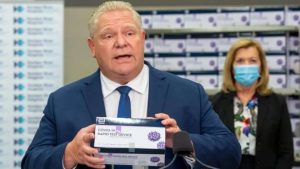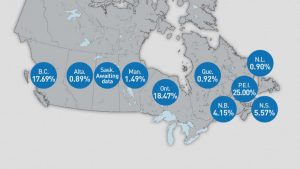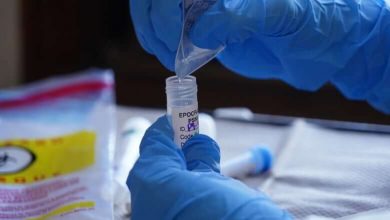Millions of rapid COVID tests gather dust as some provinces use a fraction of their supply

Months after premiers demanded the federal government step up approvals and deliveries of rapid COVID-19 testing devices, CBC News has learned that millions of the tests delivered to provincial governments were never used.
Ontario to implement mandatory COVID-19 tests for international arrivals at Pearson airport: source
CBC News Network’s Power & Politics reached out to every province asking for the number of tests it has received from the federal government and how many of those tests have been used to date. Only Saskatchewan was unable to provide detailed numbers by the time of publication.
The use of rapid tests varies from province to province. Prince Edward Island has used the largest percentage of tests it was sent by the federal government — 25 per cent of its 37,000 tests.
Alberta Premier Jason Kenney pressured the federal government to speed approval of rapid tests back in the spring and threatened to acquire the tests from other countries if Health Canada did not approve them quickly enough here. Alberta has only used 17,000 of the 1.9 million rapid COVID-19 tests it has so far received by the federal government — just 0.89 per cent of the total.
“The direction I’ve given our officials is, if we see a highly credible regulator, medications in a peer jurisdiction like the European Union, Australia or the United States that has approved a test or a vaccine or medication, we should pursue that,” Kenney said on CBC News Network’s Power & Politics in April. “We should not wait for Health Canada to catch up.”
While Alberta has used the smallest percentage of its available tests, a CBC News analysis shows that other provinces have used only a fraction of their stockpiles.
Quebec has only used 0.92 per cent of its 2.6 million tests, while Newfoundland and Labrador has used 0.90 per cent of its 144,240 tests and Manitoba has used only 1.49 per cent of its 620,376 tests.
Trudeau presses provinces for more rapid testing
Prime Minister Justin Trudeau has been encouraging the provinces to use the tests and discussed testing during his call with the premiers last week, and again during Wednesday morning’s press conference.
“We know that rapid testing, even right now with the variants spreading, is really important to get us to a place where we’re starting mass vaccinations with lower and lower case counts,” Trudeau said.
“So as we’ve sent close to 20 million rapid tests across the country we’re really hoping and excited about the different ways and innovative, creative approaches to using them.”
Trudeau’s push for more rapid testing is not surprising, considering Nova Scotia has used only 5.57 per cent of its 287,000 tests and New Brunswick has used only 4.15 per cent of its 284,064 tests.
B.C. Premier John Horgan told reporters today that his province’s reluctance to use rapid tests extensively is tied to findings in his province that they are resulting in high rates of false positives and false negatives.
The numbers are better in British Columbia — where the provincial government has deployed 17.69 per cent of its 1.3 million tests — and in Ontario, where the province has used 18.47 per cent of its 5,413,872 tests.
Back in September, Ontario Premier Doug Ford called on Health Canada to make approval of rapid tests its “number one priority.”
“It’s pretty disappointing,” Dr. David Naylor, co-chair of the COVID-19 Immunity Task Force, told Power & Politics Wednesday. “The case for these tests is strong … as a screening test. We have to hope that these catch on now in this important phase they find wide use.”
Every tool in the toolbox
Naylor, who is also a member of the federal government’s COVID-19 Testing and Screening Expert Advisory Panel, said the rapid tests have not been as accurate as lab-based tests but they’re very good at determining infectivity — the ability of a virus to infect a new host.
“You have to conceive of them as a screening test. If you get a positive, you want to confirm it with the gold standard test still, but the point is we need the information,” he said.
“We cannot be wilfully ignorant when we have the tools that can shed light on what’s going on in these settings where people are thrown together, where the risk of transmission is quite high.”
Dr. Irfan Dhalla, co-chair of the federal government’s COVID-19 Testing and Screening Expert Advisory Panel, told Power & Politics host Vassy Kapelos that rapid tests can be effective tools for screening people in the workplace and in schools.
Dhalla cited the example of the NFL’s Seattle Seahawks, which used rapid tests liberally during its recent season and saw not a single case of the disease in its organization.
“We should be using every tool we have in our toolbox at this point in the pandemic to keep Canadians safe,” he said.







Redes Sociais - Comentários